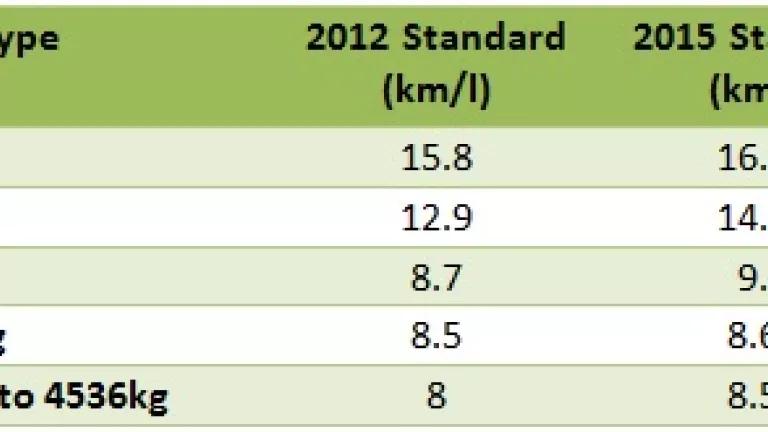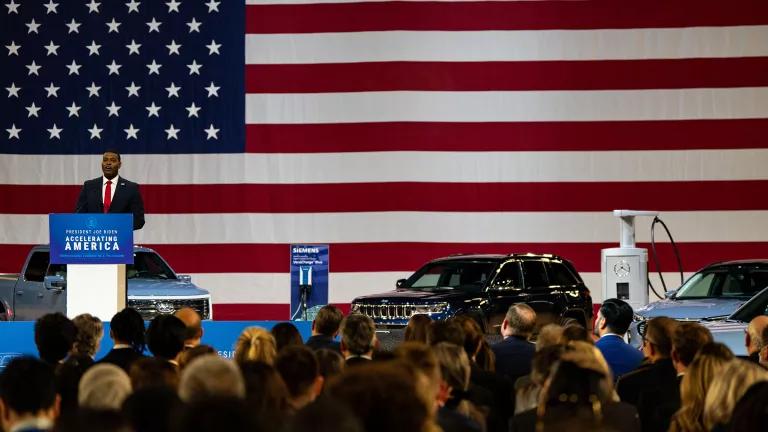Mexican Energy Ministry Commits to Better Fuel Economy Standards for Government Vehicles

This blog post was guest authored by Sam Hoyle, NRDC's Latin America Project Intern.
The Mexican Energy Ministry (SENER) recently published the third set of official energy efficiency guidelines for all the entities and branches of the Federal Public Administration in the Official Record of the Federation. While a seemingly small step, these guidelines call for the federal government to follow a number of different standards that require more efficient light bulbs and air conditioners in buildings, give priority to renting and building more efficient public offices, and even provide recommendations for less energy intensive appliances. The most important achievement of these guidelines, however, is the requirement of higher fuel economy standards for the federal vehicle fleet. These standards make important strides in helping reinforce the national average fuel economy standards approved in 2013, reduce fuel consumption, and ultimately reduce carbon dioxide (CO2) and other emissions, which are harmful to public health and the environment.
Official energy efficiency guidelines are published in accordance with the Law of Sustainable Energy Management (LASE), which was approved in 2008. Based on reporting from across the government, the National Commission for the Efficient Use of Energy (CONUEE) creates these realistic and obligatory guidelines with the goal of improving efficiency throughout the federal government. In practice, these guidelines have not changed drastically since their first release in 2010. From 2010 to 2012, for example, the guidelines for fuel economy standards only changed slightly in the light and heavy truck categories, which were also adjusted to include heavier trucks. This year, however, fuel economy standards received crucial increases across all five types of vehicles used by the government: subcompacts, compacts, multi-use, light trucks, and heavy trucks. In particular, substantial increases for compacts, multi-use transport and cargo vehicles, and heavy trucks all represent important efficiency improvements and strong signals from the federal government.
Along with reducing fuel costs for the government, these changes reinforce the 2013 fuel economy standards, which were the first set ever released in Mexico and in Latin America as a whole. The updated requirement for new or rental compact cars (14.39 km/l) will draw government vehicles nearly even with the 2013 national average fleet standard of 14.9km/l (or 35 miles per gallon), which is in effect through 2016. For a country like Mexico, where the transportation sector accounts for the largest portion of final energy consumption and the majority of refined petroleum products are imported, these standards are a crucial step in the right direction towards energy independence and meeting the country's climate change mitigation goals. To put this in context, the Institute for Transportation and Development Policy(ITDP) estimates that Mexico's vehicle fleet grows by an average of 6.32 percent annually, meaning that there could be 70 million vehicles on the road by 2030. Curbing the fuel consumption and emissions of this growing sector must become a national priority and through these guidelines the federal government is showing its commitment toward this goal.
The 2013 standards are on par with the 2016 target of 34.1mpg (or 14.5km/l) implemented by the National Highway Traffic Safety Administration (NHTSA) in the United States. They still, however, fall behind the best practices in fuel economy standards set by the European Union (equivalent of 18km/l for 2015) and Japan (20km/l for 2015). Nonetheless, these new guidelines demonstrate that the federal government is willing to play by its own rules. They also signal a desire to encourage better implementation and enforcement of the 2013 average fuel economy standards, which has been lacking as well. This is especially important because those standards expire in 2017, and the federal government should be working to establish even higher countrywide fuel economy standards from 2017 through 2025. If the 2013 standards are properly implemented they would reduce CO2 emissions by 170 megatons and cut into the high cost of gasoline imports, which reached more than US$14 billion in 2014 (according to SENER). These should be strong incentives for Mexico to continue to ensure its government procurement policies support and indeed help drive strong national fuel economy standards.




